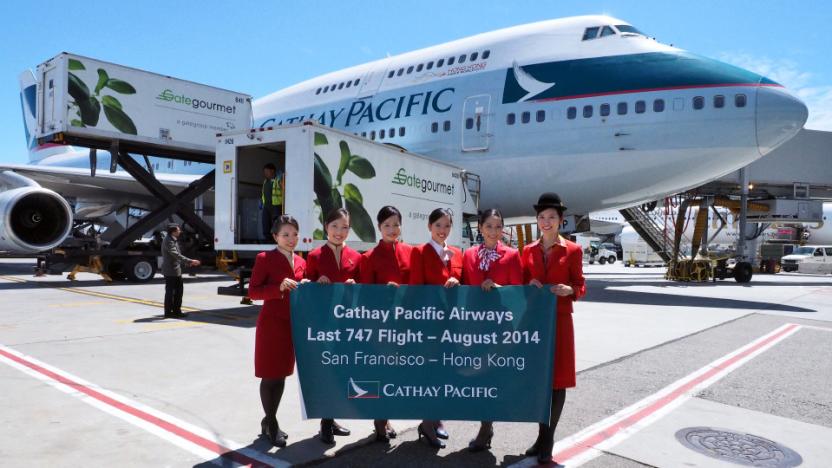airliners
Latest

The death of the original jumbo jet, Boeing's 747-400
Later this month, Cathay Pacific's 747 will fly from San Francisco to Hong Kong for the very last time. It's a story we're hearing from nearly every airline still flying the most recognizable passenger jet in aviation history -- rising fuel costs are prompting carriers to ground their fleets, opting to shuttle passengers in more modern (and efficient) airliners instead. Hundreds of 747s still take to the skies every day, but their numbers are dwindling, with Boeing's 777-300ER and 787 Dreamliner, as well as the enormous Airbus A380, picking up the slack. The flagships of yesteryear now litter the desert, with several sites in California serving as a permanent resting place for the plane that was once known as the Queen of the Skies, the Boeing 747-400.

Qantas replacing staff BlackBerrys with iPhones, Australian flights may be held up by Tiny Wings
RIM has already been feeling the sting of lost customers. That sting isn't getting any gentler, as Qantas just outlined plans to replace all 1,300 BlackBerry phones in the fleet with iPhones. As the airline explains to The Australian, a mix of cost overhead and employee feedback is steering the decision to wing it Apple's way. We also imagine Qantas may be facing the usual airline dilemma of having to replace large swaths of equipment after clinging to old technology for dear life. Naturally, the company is keen to reassure passengers that the security is up to snuff as well, and a Bring Your Own Device effort could see Android fly once it's approved. The time scale is indefinite enough that it's unlikely that we'll see the airline crew members distracted by a game of Amazing Alex on that next flight to Melbourne -- we only know that they'll be weaning themselves off of BlackBerry Messenger before too long.

easyJet airline plans to fit its planes with ash detectors
UK budget airliner easyJet unveiled a plan last week to install ash detectors on its fleet of planes. The radar devices will be fitted to the tail fin, and should be able to detect ash clouds within 60 miles and will work like other weather-detection systems already in use to pick up on thunderstorms in advance. The new ash cloud system is being dubbed the Airborne Volcanic Object Identifier and Detector, A/K/A AVOID, and it'll provide both pilots and air traffic control to see an ash cloud at altitudes between 5,000 feet and 50,000 feet, and easyJet's CEO Andy Harrison thinks it could have the power to "make large-scale ash disruption history." easyJet will have to have the devices approved by European regulators and widespread adoption across the airline to have much effect. easyJet is spending around $1.46 million to research and outfit its planes with the systems.

